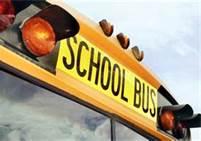

Vehicles from the opposite direction may also be turning left.Īfter the left-turn green arrow, a yellow light appears for left-turning vehicles only.Īfter the yellow light, a red light appears for left-turning vehicles only. You may turn left from the left-turn lane when you face a green arrow. When a left-turn green arrow appears for traffic in the left-turn lane, traffic going straight ahead or turning right will usually see a red light. Some intersections have separate traffic lights for left-turning traffic and for traffic going through the intersection or turning right. This allows transit vehicles to go through, turn right or left, while all conflicting traffic faces a red light.

The round signal is on top of a regular traffic signal and shows a white vertical bar on a dark background. Traffic and pedestrians must yield to public transit vehicles at a transit priority signal. Pedestrians must not cross on a left-turn green arrow unless a pedestrian signal tells them to. If the light turns red when you are in the intersection, complete your turn when it is safe. You can still turn left when the light is green, but only when the way is clear of traffic and pedestrians. Stop if you can do so safely otherwise, complete your turn with caution. This means the green light is about to appear for traffic in one or both directions. Vehicles turning left from the opposite direction may also be making left turns because they too face a left-turn green arrow.Īfter the left-turn green arrow, a yellow arrow may appear. When a left-turn green arrow is shown with a red light, you may turn left from the left-turn lane. Pedestrians must not cross on a flashing green light unless a pedestrian signal tells them to. This is called an advanced green light because oncoming traffic still faces a red light. When you face a flashing green light or a left-pointing green arrow and a green light, you may turn left, go straight ahead or turn right from the proper lane.
AMBERLIGHT DRIVING SCHOOL DRIVERS
Lights and arrows to help turning vehiclesįlashing green lights and green arrows direct drivers who are turning. You may also turn left on a red light if you are moving from a one-way road onto a one-way road, but you must come to a complete stop first and wait until the way is clear.

Unless a sign tells you not to, you may turn right on a red light only after coming to a complete stop and waiting until the way is clear. Wait until the light changes to green and the intersection is clear before moving through it. If there is no sidewalk, stop at the edge of the intersection. If there is no crosswalk, stop at the edge of the sidewalk. If there is no stop line, stop at the crosswalk, marked or not. Bring your vehicle to a complete stop at the stop line if it is marked on the pavement. You must stop if you can do so safely otherwise, go with caution.Ī red light means you must stop. When turning left or right you must yield the right-of-way to pedestrians crossing the intersection.Ī yellow - or amber - light means the red light is about to appear. Green lightĪ green light means you may turn left, go straight or turn right after yielding to vehicles and pedestrians already in the intersection.
AMBERLIGHT DRIVING SCHOOL HOW TO
They tell road users when to stop and go, when and how to turn and when to drive with extra caution. Traffic lights tell drivers and pedestrians what they must do at intersections and along roads.


 0 kommentar(er)
0 kommentar(er)
